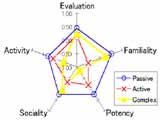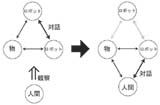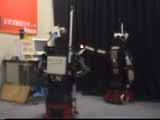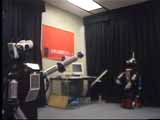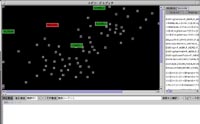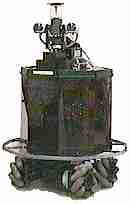|
Robovie is made for future
everyday-life robot. It has enough sensor and gesture ability (4
DOF arms and 3 DOF head) for communication study. The control
program is developed based on "A Robot Architecture Based on
Situated Module", which is our former research. We have
implemented over 100 interactive behaviors into the robot with the
situated module architecture. Then, we have performed many
demonstration of Robovie (Robofesta, Robodex 2000, etc.) Many
children seem to like Robovie (especially they like hugging).
However, for adult human-robot communication, we have many things
to research.

| Size |
60cm in a diameter, 120cm
height |
| Actuators |
Head (3 DOF), Pan-tilt in a
camera(2 DOF x2), Arm(4 DOF x2), Locomotion (Pioneer 2) (2
DOF), Speaker |
| Sensors |
Two Cameras, Omnidirectional
vision sensor, 26 touch sensors (in body, arm, and head), 24
sonars, microphone |
| OS |
Realtime Linux |
| Software
architecture |
Situated module
architecture |
| Number of situated
modules |
100 | |
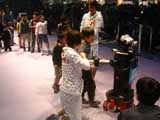
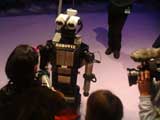
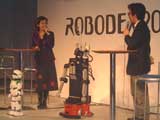
Playing children with
Robovie at Robodex
2000
|




